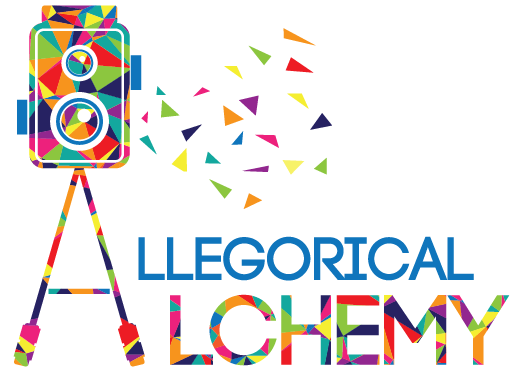Step by Step Process to Allegorical Alchemy Editing
We capture the stories and raw film and materials within its own process. But when all information, interviews and details are gathered, and general film plans are approved, the theory of film making above becomes a thoughtful process of art and science.
Stage 1: the paper edit
First, I transcribe the interview/s in full. I print them out, and while consulting the agreed upon key messages, I highlight relevant sections of the interview. The highlighted section may pertain to a key message, a particularly emotive narrative, or something that helps to provide context. If I have more than one person speaking in the film, I highlight their transcripts in different colours. Next with my trusty little scissors, I cut out all the highlighted sections.
On my big dining table, I take my little strips of paper, and first categorize them by theme. After this, I start to physically build the story. I look for an opening hook to draw the audience in, then details that introduce the person on screen and the circumstance to provide exposition for the film. Next I look for elements that contribute to rising tension or a key incident, before finally selecting elements that resolve the story, and where relevant, include a call to action. I often move my strips of paper around multiple times, until I get something that I am happy with. Normally only about half of what I have selected makes the final arrangement for the paper edit, as I may have multiple instances of someone basically saying the same thing.
Once I have the story that I am happy with, I stick the strips of paper to fresh pieces of paper, and this is my paper edit complete.
Stage 2: The initial cut
In Adobe Premiere Pro, I create an initial edit of the film based on my paper edit. Sometimes the edit will be identical to that which is on paper but, more often than not, I make additional tweaks at this point in time. This may be editing for story, emotion or rhythm. With regards to story, perhaps on seeing it on screen, I think there needs to be a little extra context, or I have included something that is not relevant, and its inclusion is causing me to lose interest. Perhaps, the interviewee had a voice crack, a pause, a sob, or a laugh which shows their emotion and helps me engage with the story which I could not appreciate when the edit was on paper. Perhaps, the interviewee had a run-on sentence and I was unable to cut where I had initially envisaged because the rhythm of the cut would be all wrong and it would seem like there was an unfinished thought. Once I have made these little edits, my initial cut is done and ready for sending to those who appeared in the film and the commissioning collaborator/s for their feedback.
Stage 3: Feedback on initial cut
At this point the film is only very loosely edited together with no covering shots and the transitions between scenes clunky. I seek feedback from the commission collaborators and interviewee/s on the narrative told, whether the film addresses all the key messages, if there is anything missing, or anything included that should not be. In addition, I check with the interviewee/s that the narrative I have selected represents the essence of them and their story.
Stage 4: The second cut*
Using the feedback from the initial cut, a second cut is created either adding or removing sections or restructuring as discussed with the collaborators.
Stage 5: Feedback on second cut*
Collaborators are given an opportunity to provide further feedback on the film at this stage.
Stage 6: Fine cut
The second cut will form the basis of the final film with minimal edits to the narrative beyond this point. The fine cut involves adding covering shots (b-roll), photos, and titles. The aim of the B-roll is to add movement into the film to keep it visually engaging for the viewer and to provide more elements of relevant story. For example, it may show a carer looking after their spouse who has dementia, or a patient taking their medication, or a doctor examining a patient. Photographs help to provide insight into the interviewee’s life. The covering shots and photographs also enable a finer editing of the film. They can be strategically placed to cover awkward cuts and enable fine tuning of the narrative. Unless you are a super confident public speaker with a ton of PR training and scripted sentences that roll off the tongue, it is highly unlikely that raw footage recorded of an interview is anywhere near what the final film will look like. People naturally to go off at tangents, they forget words, repeat themselves, have little verbal tics like “um” or “ahh”. Many of these can be removed, streamlining the story and reducing the length of the film. Colour corrections will be made, and any disruptions in the audio addressed.
Stage 7: Feedback on fine cut
The fine cut is sent to a wide group of collaborators (who participated in pre-production research) for their feedback.
Stage 8: Finalization
Any further edits are made based on the feedback received in stage 7. Closed-captioning is added. Credits and titles are added. And the film is finalized. With permission, the film is made public on Vimeo, and Allegorical Alchemy’s website, and the final film files provided to the commissioning collaborator via Google drive.
*A second cut is a common required practice. Some projects may not require it while others may require more than two cuts. Projects are generally quoted based on cooperation and collaboration and a clear process as outlined. When more than two-cuts are required, we must review the contract and evaluate the benefits of a third or further cut before continuing.

